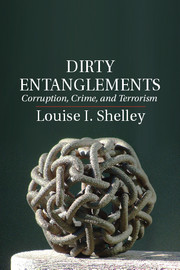Book contents
- Frontmatter
- Dedication
- Contents
- Figure, Maps, and Tables
- Acknowledgments
- Introduction
- Part I The Logic of Corruption, Crime, and Terrorism
- 1 Crime and Corruption behind the Mass Attacks
- 2 Corruption
- 3 The Evolution of Organized Crime and Terrorism
- 4 Environments, Global Networks, and Pipelines
- Part II The Diverse Businesses of Terrorism
- Index
- References
1 - Crime and Corruption behind the Mass Attacks
Published online by Cambridge University Press: 05 August 2014
- Frontmatter
- Dedication
- Contents
- Figure, Maps, and Tables
- Acknowledgments
- Introduction
- Part I The Logic of Corruption, Crime, and Terrorism
- 1 Crime and Corruption behind the Mass Attacks
- 2 Corruption
- 3 The Evolution of Organized Crime and Terrorism
- 4 Environments, Global Networks, and Pipelines
- Part II The Diverse Businesses of Terrorism
- Index
- References
Summary
Terrorist attacks over the last two decades have been characterized by increasing violence, with ever larger numbers of victims and less specific human targets. Some of these attacks were directed and funded from overseas as the terrorists exploited the globalized world. This has been called the “new terrorism.” Since the turn of the millennium, the most fatal attacks have been distributed across the globe. Many, but not all, have links to jihadi movements. September 11 was the most dramatic and the most fatal, but unfortunately, it was only one of a group of increasingly lethal attacks. These most deadly acts of terrorism have certain important shared characteristics – all were facilitated and/or financed by crime and corruption. All the attacks, except the urban violence in São Paulo, Brazil, have international components, including money, personnel, or inspiration. The lethality of some of these attacks is explained, as in Brazil and Russia, by the deadly response of state security officials.
This chapter shows how crime and corruption played a critical role in every major terror attack of the last decade. From drug trafficking to credit card fraud, terror groups have exploited black markets to advance their causes, blurring the line between criminal and political activity. They chose their points of attack to maximize economic harm and have greater political resonance.
- Type
- Chapter
- Information
- Dirty EntanglementsCorruption, Crime, and Terrorism, pp. 29 - 63Publisher: Cambridge University PressPrint publication year: 2014

